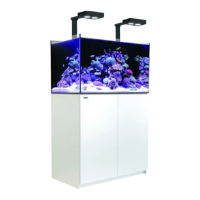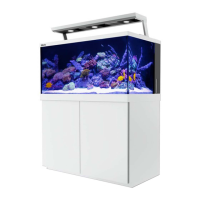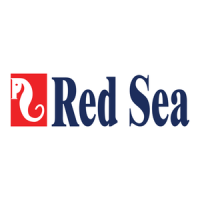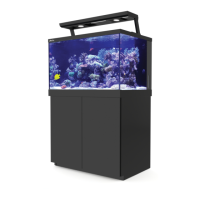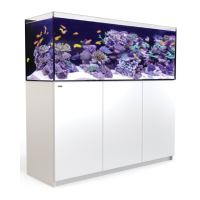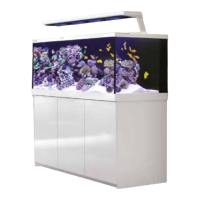Red Sea MAX User Manual
The Red Sea MAX features a 4-stage reef filtration system
driven by two 550 lph (145 gph) submersible pumps,
sufficient to circulate the entire water volume of the tank 10
times per hour. It is designed to prevent clogging and the
build-up of organics, maintaining the ideal water quality for a
reef aquarium. The system is comprised of the following:
A filtration system is made up of a number of elements, each
performing complimentary tasks.
The heart of a reef filtration system is the protein skimmer
which removes the vast majority of the wastes produced by
the aquarium inhabitants, as well as thoroughly oxygenating
the water.
• Protein skimmer: The turbo air injector protein skimmer
provides a constant mixture of fine air bubbles (0.5-
0.8mm in diameter) and water, creating a thick, dry and
stable foam of partially dissolved organics. The MAX
skimmer filters the entire water volume of the tank
almost 4 times per hour
Mechanical filtration removes the large organic substances,
such as dead fish and plant matter, excess food, as well as
sediment from the water column, and moves it to a user-
accessible location.
Although the mechanical filtration system removes most of
the fine organic material, what remains begins to decompose.
Some of these organic particles, known as dissolved organic
carbons (DOCs), are too small to be picked up by the protein
skimmer, causing build-up in the water and giving it a
yellowish hue. The chemical filtration action of active carbon
essentially acts as a large sponge, absorbing these impurities
from the water.
•
Mechanical filtration: The mechanical filtration media
consist of double-stage sponges to trap coarse and fine
particles. Their position at the inlet of the filtration
provides easy access for routine cleaning.
• Activate carbon
: The 4mm (0.15”) granulate activate
carbon is highly porous, phosphate-free charcoal. It
removes any DOCs for at least two months, depending on
the aquarium bio-load.
The last stage in the decomposition of organic matter is
mineralization, where bacteria convert organic matter into
inorganic materials, such as ammonia and ortho-phosphate,
which can be harmful to the aquarium inhabitants. Through
the process of nitrification, a special species of nitrifying
bacteria converts toxic ammonia into less toxic nitrate. In
order to provide the bacteria with the large contact area and
high flow rate it needs to develop into a colony, biological
filter media has been added to the filtration system.
• Biological media: The highly porous ceramic bio-media
provides enormous surface area (420m
2
/l) for nitrifying
bacteria colonization.
4
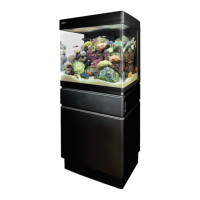
